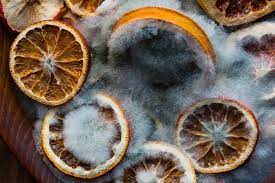Navigating the Risks of What Happens if You Eat Mold

Understanding the Consequences of Consuming Moldy Food
Mold is a common occurrence in our environment, often taking residence on various surfaces, including food. While some molds are harmless, others can produce toxins that pose potential health risks when ingested. In this comprehensive article, we delve into the potential consequences of consuming moldy food, explore the types of molds to be wary of, and offer insights into how to minimize the risks associated with mold-contaminated edibles.
The Molds in Our Midst
Molds are fungi that thrive in damp, warm environments. They play a vital role in nature by breaking down organic matter, but their presence on food can pose health concerns. Molds reproduce by releasing spores into the air, which can easily land on various surfaces, including our edibles.
Types of Mold on Food
Not all molds are dangerous, and some are even used deliberately in food production, such as in cheese and certain fermented foods. However, there are molds that produce mycotoxins, harmful compounds that can have adverse effects on human health when ingested.
1. Aspergillus: This genus of mold can produce aflatoxins, potent carcinogens that can lead to liver damage and increase the risk of liver cancer.
2. Penicillium: While some species of Penicillium are used in cheese production, others can produce mycotoxins that might cause health issues, including respiratory problems.
3. Fusarium: This mold can produce mycotoxins that have been associated with gastrointestinal distress, and in severe cases, they might affect the nervous system.
Potential Health Risks if You Eat Mold
Consuming moldy food carries certain health risks, depending on factors such as the type of mold and the individual’s immune system. While some people might experience minor symptoms, others could be more vulnerable to severe reactions.
1. Allergic Reactions: Individuals allergic to mold might experience symptoms like sneezing, coughing, runny nose, or skin rashes after consuming moldy food.
2. Gastrointestinal Distress: Eating moldy food can lead to symptoms like nausea, vomiting, diarrhea, and abdominal pain. These symptoms are generally short-lived but can be uncomfortable.
3. Mycotoxicosis: In more severe cases, consuming mycotoxins from moldy food can result in mycotoxicosis, which might include neurological symptoms, organ damage, and in extreme cases, even death.
Minimizing Risks and Safe Practices

To minimize the risks associated with consuming moldy food, consider the following practices:
1. Inspection: Regularly check food items for signs of mold growth. Discard any foods with visible mold, as mold can penetrate deeper than what’s immediately visible.
2. Storage: Keep perishable foods refrigerated and use them before their expiration date. Proper storage can slow down mold growth.
3. Scrutinize Soft Foods: Foods with high moisture content, such as fruits, vegetables, and bread, are more susceptible to mold growth. Pay extra attention to these items.
4. Cut and Discard: If you spot mold on firm foods like hard cheeses, you can cut away the affected portion, but ensure there’s a substantial margin to prevent cross-contamination.
Health and Well-Being First
While the occasional accidental ingestion of a small amount of mold is unlikely to cause severe harm to most people, it’s important to prioritize your health and well-being. Being vigilant about inspecting and properly storing food, understanding the types of molds that can pose risks, and being aware of potential health reactions can empower you to make informed choices about the foods you consume.
In conclusion, while mold is a natural presence in our environment, its potential dangers warrant careful consideration. Awareness of the types of molds that can produce harmful mycotoxins, understanding the potential health risks, and adopting safe food practices are essential steps toward minimizing the risks associated with consuming moldy food.